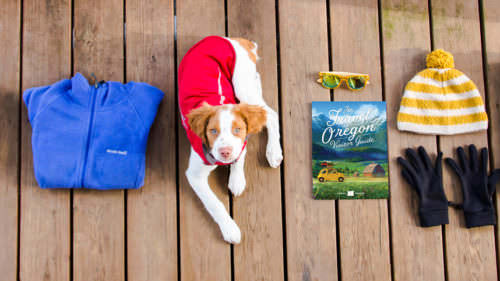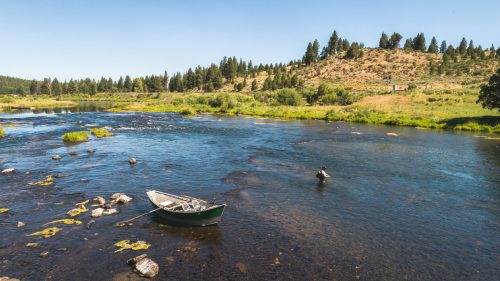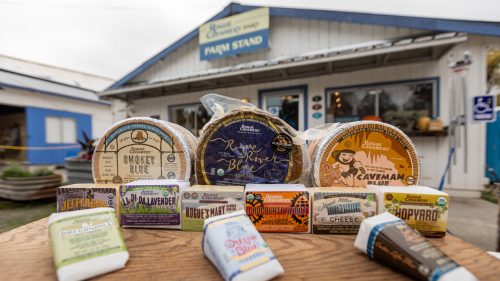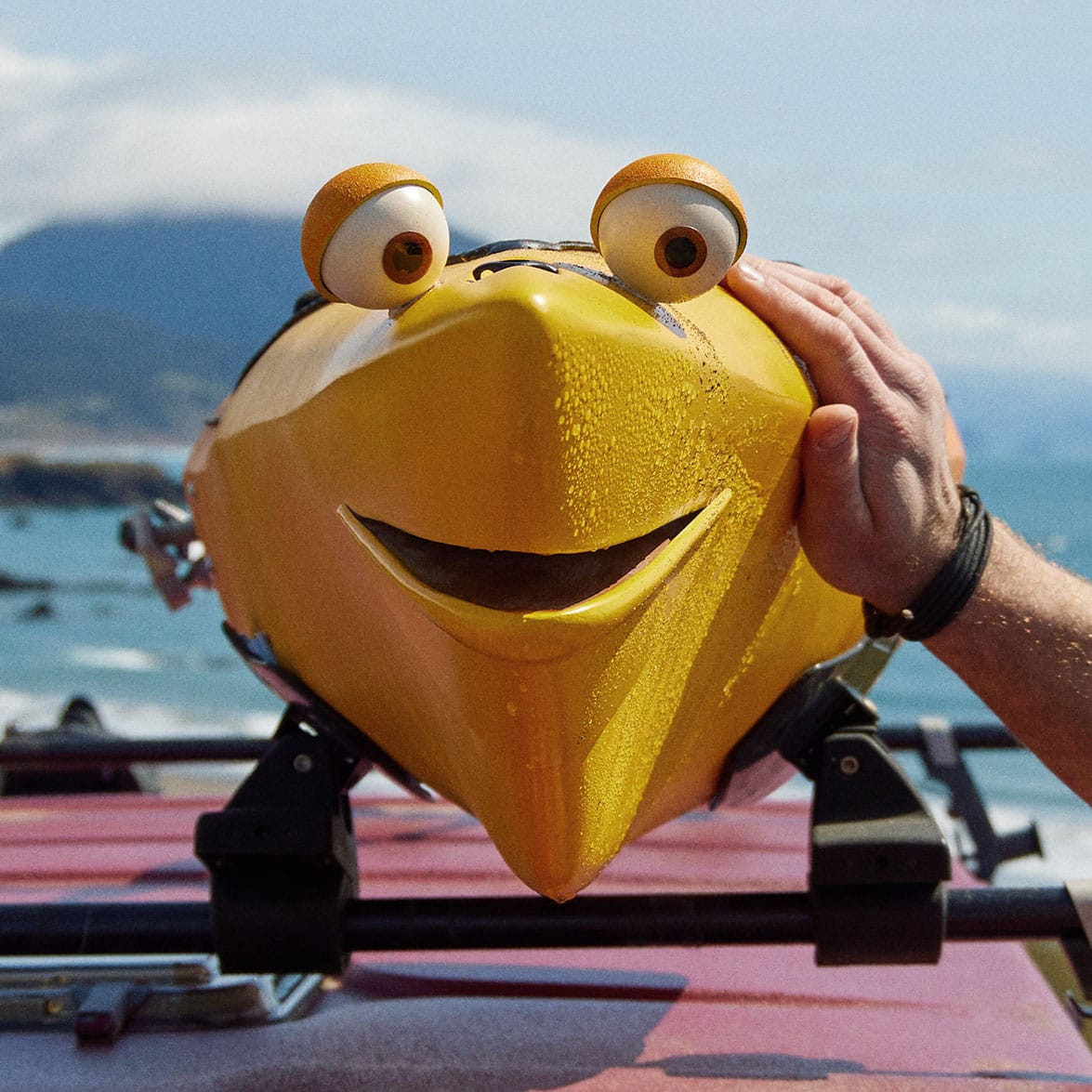Whether you’ve lived here for years or are a brand-new transplant (welcome!), there’s always more to learn about Oregon, besides our state fruit (pear), mushroom (Pacific golden chanterelle) or nut (hazelnut — or filbert, if you want to sound like a local). Here’s what you need to know to get start getting acquainted with the 33rd state when you’re ready to hit the road.
Oregon Has Seven Regions
When it comes to land, Oregon has lots of it. In fact Oregon is the 10th largest state in the nation in terms of land area — the ninth largest if you count its waterways, too. There’s so much land, we categorize them into seven regions, each as distinct (and handsome) as the seven dwarves. Here’s a quick primer (picture these regions in a clockwise direction):
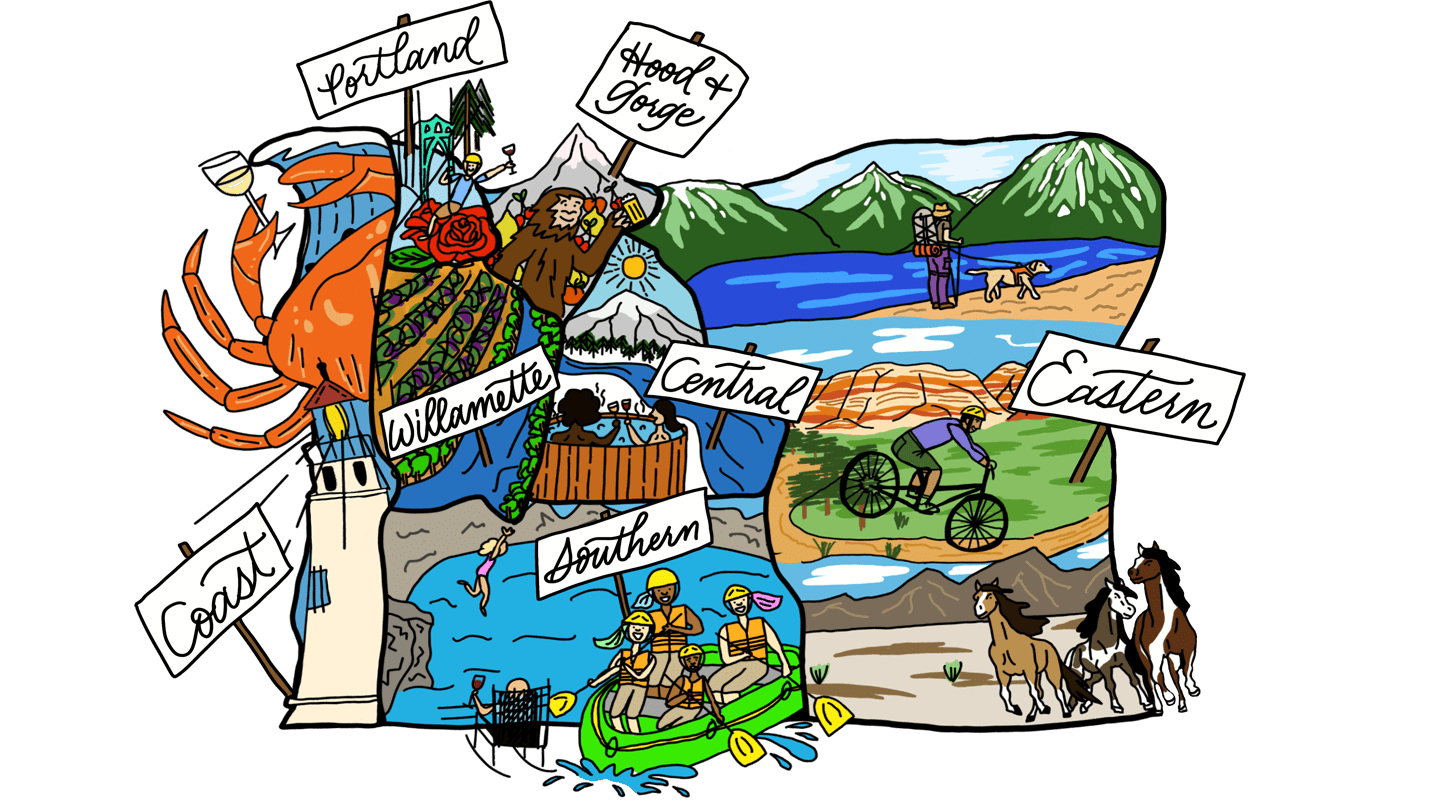
Portland Region
While Portland does have its share of fair-trade coffee roasters, bike lanes and independent bookshops, it’s much more than just a “Portlandia” stereotype. The downtown area — as well as the beautiful Tom McCall Waterfront Park — encompasses just 1 square mile of the city. The rest of the Portland Region consists of leafy, diverse neighborhoods and suburbs, each with their own unique shops, restaurants and attractions in their thriving downtown districts, from Gresham and Milwaukie also in Multnomah County to Beaverton and Forest Grove in the Tualatin Valley to St. Helens and Scappoose in Columbia County to Oregon City and West Linn in Clackamas County.
Mt. Hood and the Columbia River Gorge
Carved by the ancient flow from the Missoula flood, the Columbia River Gorge is a geologic marvel, and you can see it all from your window along the Historic Columbia River Highway Scenic Byway. You can follow the path of the settlers along the Oregon Trail through these riverfront towns and, just to the south, the mountainside communities at the foothills of Mt. Hood, Oregon’s tallest peak. Outdoorsy visitors flock to this region to kiteboard, windsurf, kayak, hike, bike, ski and sled. The East Gorge Food Trail is a self-guided journey to historic orchards, vineyards and restaurants with grand scenery around Mosier, The Dalles and Dufur.
Eastern Oregon
If it’s solitude you’re looking for, Eastern Oregon’s rugged country awaits. With the soaring peaks of the Wallowa Mountains, hidden river gorges and desert, the deep chasm of Hells Canyon, wide expanse of the Steens Mountain and the Alvord Desert and the magical formation of the John Day Fossil Beds, it’s a destination with natural splendor ripe for exploring. There’s plenty of human history to discover here too — Old West towns, Indigenous cultural traditions, Chinese and Japanese history and Black timber pioneers, who are celebrated at the Maxville Heritage Interpretive Center in Joseph and other places.
Southern Oregon
With its Wild and Scenic Rivers, Crater Lake National Park, and dozens of wineries in the Umpqua and Rogue valleys, you could road-trip through Southern Oregon for weeks and still have more to do. Ashland and Jacksonville are hot spots for music, theater and art culture, while the self-guided Rogue Valley Food Trail is your blueprint for culinary delights and foodie experiences. Don’t forget to find some of the darkest skies in the world for stargazing in the more off-the-grid, high-desert towns.
Central Oregon
The sunny high-desert landscape of Central Oregon brings happiness to visitors in so many forms. It’s one of the craft-beer hot spots in the state, as well as home to a diverse array of makers and innovators. It’s also a destination for adventurers and natural history buffs, from bluebird skiing at Mt. Bachelor to lava lands, caves, pet-friendly trails, fishing, stand-up paddleboarding and rafting on the Deschutes River. Spring through fall months offer almost uninterrupted sunshine, while winter brings a blanket of powder for snowy family fun. Check out the self-guided High Desert Food Trail for all sorts of food and farm inspiration.
Willamette Valley
While it may be best known for its award-winning pinot noir, there’s so much more to the Willamette Valley. Tucked between the steep Cascade mountains and the rolling Coast Range, the region stretches from Newberg in the north to the Eugene area in the south. Visitors come for the farm-to-table dining and farm-stay experiences, the covered bridges and waterfalls, the Oregon State Capitol and other historic buildings and landmarks, and the host of water-play opportunities on the Willamette River. Find U-picks, farm stays, seasonal fare and more along the Great Oaks Food Trail, Mid-Willamette Valley Food Trail and South Willamette Valley Food Trail.
Oregon Coast
Along Oregon’s 363 miles of coastline, the Oregon Coast’s beaches are public for all to enjoy, thanks to the landmark 1967 Beach Bill. Some cities on the Coast get busy on summer days, but if you travel farther south, you’ll see that the crowds thin out and there’s tons of room to stretch out. The North Coast (Astoria to Pacific City), Central Coast (Lincoln City to Dunes City) and South Coast (Reedsport to Brookings) each bring their own unique character and charm. The North Coast Food Trail, Central Coast Food Trail and Wild Rivers Coast Food Trail are your blueprints tasty road-tripping delight.
You’ll Want to Practice Some Pronunciations
You might find that some (OK, a lot) of our city or street names are hard for you to pronounce. That’s all right, we won’t judge you. Just ask a local for help — but know that we sometimes get tripped up too. Here’s how to pronounce some of our trickiest names, many of them reflecting Oregon’s Indigenous history: Oregon (OR-ih-gun), Willamette (will-AM-it) River, Couch (rhymes with “pooch”) Street, Yachats (YAH-hots), Champoeg (sham-POO-ee), La Grande (the “e” is silent) and The Dalles (the DALZ) — yes, you need to say both words. And here’s a real kicker: Aloha (uh-LOW-uh) is not pronounced the same as the Hawaiian greeting, although there is some amazing Hawaiian food to be found here and throughout the suburbs.
Things Are Different Here
Oregon’s state motto is “She flies with her own wings,” and true to that sentiment, you might notice a few things right away about how it’s different here. There’s no sales tax, so yippee for shopping sprees. We also have a plastic-bag ban in place to curb ocean pollution, so expect to carry your groceries or takeout food in a paper bag, or bring your own reusable shopping bag if possible. At the gas station, we have the option of having an attendant pump our gas, or — as of 2023— pump our own gas. If you choose the former, you can sit back and enjoy a moment of peace before you get back on the road. Oh, and Oregonians generally prefer to wear raincoats rather than carry umbrellas — but we’ll leave that up to you.
No, It Doesn’t Always Rain
You may think it’s all one big forest here, but the swaths of green are interspersed with ribbons of blue and patchworks of browns and golds. The varied geography means a big difference in weather — by region and season. Sure, it rains (rain pants and weatherproof boots are your best friend), but there are plenty of days and weeks of sunshine, even in the winter. Also, most of the Beaver State is actually high desert, where it’s dry. The Southern Oregon Coast also tends to be warmer, earning its nickname of the Banana Belt. Summer across the state is dry and warm, which makes outdoor wine tasting especially lovely (and responsible recreation extra important). Wherever and whenever you go, here’s a handy-dandy first-timer’s guide to packing for Oregon.
It’s Easy to Get Around
Oregon is big, but it’s easy to get around. Most fly into the Portland International Airport, but there are several ways to fly to your Oregon adventure at airports across the state, if that suits your needs. If you prefer to drive, you can travel between most regions within a few hours. From Portland it’s one hour west to Seaside on the Coast, east to Mt. Hood or southwest to McMinnville, part of Willamette Valley wine country. In two hours, you can be hiking in Eugene (south on Interstate 5) or touring The Dalles (east on Interstate 84). In three hours, you can be soaking up the cowboy culture in Pendleton (east on I-84) or playing at a sno-park in Central Oregon near Mt. Bachelor, via Highway 20. You could also be exploring the great sandy dunes at Oregon Dunes National Recreation Area. In four hours, you can find yourself at the Painted Hills National Monument (southeast of Mt. Hood) or in Southern Oregon wine country (south on I-5) for world-class vino and views for miles around. If you’re willing to drive for five or six hours, you can find yourself in the southeastern corner of the state at Steens Mountain and the Alvord Desert, or on a secluded beach on Oregon’s South Coast. Better yet, spend a few nights at destinations along the way to really get a sense of place.
We All Do Our Part to Care for the Land
True Oregonians know that weather conditions can change on a dime, so it’s smart to be prepared with your Ten Essentials as well as an emergency bag in your car with blankets and extra food and water, and a full tank of gas. Read up on more tips for how to Take Care Out There. Once you’re on the road, if the conditions aren’t shaping up for you, turn back and plan to return another day — your adventure can wait. Take extra precaution in the winter if you’re headed to Central or Eastern Oregon in particular, since some of us grew up in places where it was natural to drive in the snow; others, not so much.
Oregon Winter Driving 101 — Top Tips to Know
Wherever you choose to visit, know that weather in Oregon can be unpredictable, so it’s vital to check road and weather conditions just before you head out. Here are more top tips for staying safe.
- Pay attention to your tires.
- Ready the rest of your car for winter.
- Scrape or clean off all windows.
- Chill out and take your time.
- Focus on driving.
- Don’t panic if you get stuck.
Certain routes will require carrying chains or having traction tires (3 Peak Mountain Snowflake symbol on the tire). Rental-car companies do not provide chains, and most rentals do not come with approved traction tires. Unlike Washington, AWD or 4WD vehicles are not enough and don’t qualify for traveling on some roads.
If you don’t have traction tires, practice installing chains on your car (check the requirements at TripCheck.com before you go) and find how-to videos and more winter travel tips. If in doubt, look to book a guided snow tour with shuttle transportation to your destination.
Ready to Travel?
Order a free Travel Oregon Visitor Guide, Scenic Byways Guide or Guide to Oregon Indian Country to help map out your road trip. Or stop by any of the Travel Oregon Welcome Centers to pick up free resources and chat with a friendly staff member, and you’ll be out adventuring in no time.
